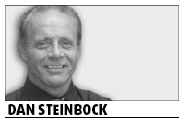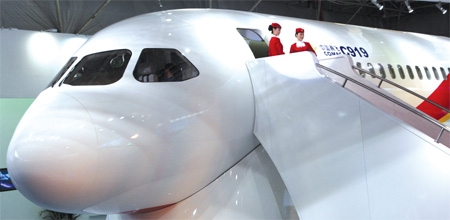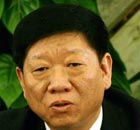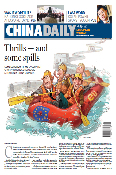A tale of two countries' economic growth and recovery
Updated: 2009-08-20 07:50
By Dan Steinbock (China Daily)

Until recently, investors had enjoyed market gains in the US and China. By early August, the Standard & Poor's 500 Stock Index had climbed about 50 percent from its low in March, while US stock-market capitalization increased by almost $4 trillion during that period.
In China, the benchmark Shanghai Stock Index has been up more than 80 percent this year because of a rise in property and equities markets.
Despite parallel market gains, the growth stories in China and the US are like Charles Dickens's A Tale of Two Cities: parallel, yet different. While the economic recession means uncertainty worldwide, China is expected to return to double-digit growth by 2010, whereas Americans face jobless recovery in the short term.
This is all about macroeconomics, and macroeconomics is determined by three factors: unemployment rate, inflation and economic growth. It is the interplay of these three concepts that best explains the performance of an economy.
Given the massive monetary injection in the US economy, it is only understandable that many Americans feel uneasy about the potential of runaway inflation sometime in the future.
Led by its chief Ben Bernanke, the Federal Reserve has engaged in a complicated balancing act to keep inflation in control. When Fed policymakers assembled for their August 11-12 meeting, the news from July labor markets along with other positive indicators suggested that the recession was close to ending. By keeping interest rates close to zero, the Fed signaled that while the worst might be over, recovery needed continued support and that inflation was not a source of concern for now .
Is the Fed right? Most likely, yes. Strong wage growth requires a strong job market, which is still far away. If anything, the trend of wages and prices indicates a further fall in the short term even if the pace of the plunge is slowing down.
Before recession set in, the unemployment rate in the US was 4.7 percent. Now it is twice as high. Full employment is thought to require a level of about 5 percent. It is only then that price pressures can be expected to start rising - and it will take a while to get back to that level.
What about economic growth? After all, the faster the average productivity growth, the better are the chances of individual Americans improving their standard of living, or raising the per capita GDP.
Since the beginning of the global recession in December 2007, economic growth has plunged. Even in the first quarter of this year, the US GDP sank 6.4 percent. In the second quarter, however, the contraction was only 1 percent, and less than expected.
As seen in the Blue Chip Economic Indicators survey, the overwhelming majority of private economists now believe that the economic downturn will be declared to have ended in the summer.
Typically, the cover story of the latest BusinessWeek is about "the case for optimism". Still, the consumer confidence index fell for the second straight month, reaching 63.2. The drop surprised market forecasters, who had expected the index to rise about 5 points higher, and thus caused the fall of US stocks.
American consumers today are less optimistic about their personal finances than at any other time since the end of World War II. The recession may be coming to an end, but hard times for consumers and workers are not over. Many people are still losing jobs, or working shorter hours and thus earning smaller wages.
In February 2008, the White House forecast that unemployment would peak at 8.5 percent by the end of the year. But it has shot up to about 9.4 percent now. In June, 443,000 jobs were lost in the US, but July saw the loss of "only" 247,000. Though it is the smallest monthly loss of jobs in almost a year, it still is very high. Plus, many people no longer list themselves as unemployed and simply drop out of the job market.
Some 6.7 million jobs have been lost in the US since December 2007, something not seen in the past 60 years. Every third unemployed has now been out of work for more than two years. And the unemployment rate is not expected to top out until the US economy gets strong enough to create some 100,000 jobs a month. Only when businesses start hiring again that the unemployment rate will really begin to decline, and, with the current pace of development, that may not happen until next spring.
Despite some stabilization, unemployment will continue to dampen the prospects of economic recovery. If people don't have jobs, they will not spend, which will constrain consumer-led growth.
In the ailing housing sector, making timely payments is getting harder for borrowers who have lost their jobs, seen their wages cut or remain worried about their jobs. In July, US home foreclosures set another record as more than 360,000 households drew foreclosure filings. Since January, the notices of default, auction or repossession have reached almost 2.3 million. The drastic rise has been attributed to unemployment.
The interplay of inflation, unemployment and growth drives politics. "By any measure," said US President Barack Obama in early March, "my administration has inherited a fiscal disaster."
Ever since the White House has continued to remind the public that former president George W. Bush left behind a trillion-dollar budget deficit, an extraordinary recession and a broken financial system.
But that has not stopped Republicans from charging that the Obama's policies - particularly his healthcare reform -are adding to the country's economic problems.
Until this spring, Americans did consider the fiscal nightmare had been "inherited", but perceptions are shifting now. While Obama's economic policies now divide the nation, his favorability ratings continue to be relatively high (two out of every three Americans have a favorable opinion of him).
Swift recovery is vital to support the economic policies of the White House and retain Obama's political capital. Otherwise, the fault for what is now seen as the "Bush mess" will be attributed to the "Obama economy". Till now, less than 15 percent of the $787-billion package has filtered into the US economy, which is expected to strengthen by the end of 2009 or beginning of 2010 (which is vital for the Democrats because of the Congressional elections in 2010).
On the other hand, Obama's aggressive stimulus policies contribute to the deepening deficit, which will increase pressure on the US dollar.
The US story of sluggish growth is very different from that of China's experience. Despite concerns that another bubble might be in the making in the Chinese markets, Goldman Sachs has raised its forecast for China's full-year growth to 9.4 percent, which is significantly higher than even the government's 8.0 percent target.
As in Dickens's A Tale of Two Cities, these two growth stories occur in parallel and connected economies. But the stories are very different and so are the future prospects of the two great nations.
The author is the Research Director of International Business at the India, China and America Institute.
(China Daily 08/20/2009 page9)
Paper's Digest

Chinese jet takes on Big 2
First large commercial plane set to ride on demand for aircraft as economy grows.
Super-CPU only for domestic eyes
Specials

Gaining ground
Doing business in china for westerners has come a long way, Peter batey says.

Safeguarding environment a priority
China continues to face mounting pressure to curb environmental degradation, despite progress in reducing pollution over the last five years, the environmental protection minister warned.

Employment to remain a continuing challenge
China's top labor official said the country will face a tough employment situation in the next five years.
